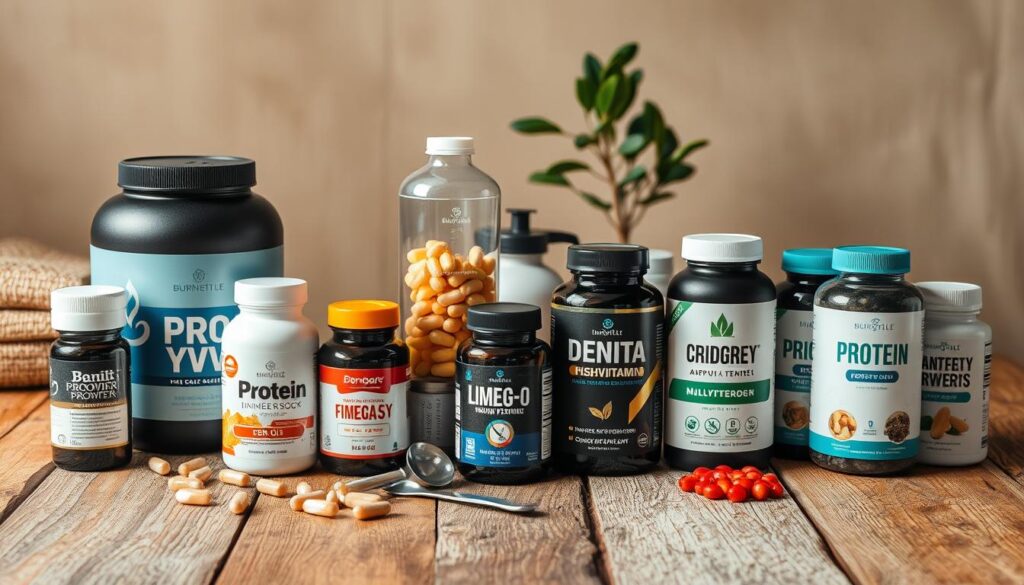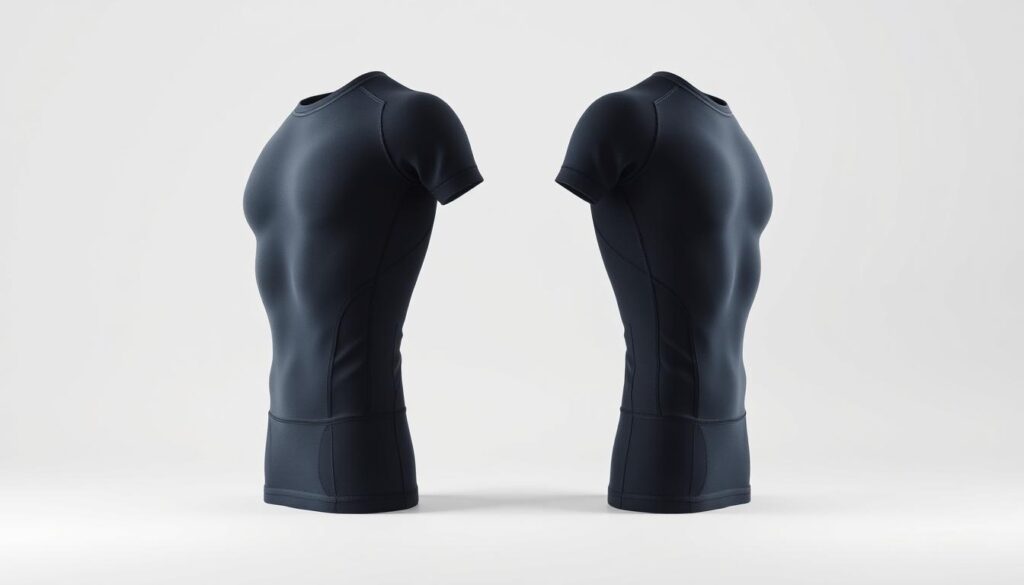Ever felt that lingering soreness after a tough workout? I know I have. It’s that moment when your body reminds you it needs time to heal. But what if you could speed up the process and get back to your fitness routine faster? Recovery isn’t just about resting—it’s about giving your body the right tools to rebuild and strengthen.
Nutrition and sleep are the unsung heroes of recovery. While supplements can help, they’re no match for a balanced diet and quality rest. Whether you’re a casual gym-goer or a competitive athlete, understanding how to support your body is key. From the foods you eat to the habits you keep, every choice matters.
Research shows that consuming 1.6g of protein per kilogram of body weight daily maximizes muscle growth. And did you know cherry juice can reduce soreness when consumed pre-workout? But it’s not just about what you do—it’s also about what you avoid. Overtraining can lead to microtears and prolonged fatigue, so balance is essential.
In this guide, I’ll walk you through a structured approach to recovery. From foods and drinks to lifestyle habits, these actionable tips will help you bounce back stronger and faster. Let’s dive in and give your body the care it deserves.
Key Takeaways
- Nutrition and sleep are more impactful than supplements for recovery.
- Consuming 1.6g of protein per kilogram of body weight daily supports muscle growth.
- Cherry juice can reduce soreness when consumed before workouts.
- Overtraining increases the risk of microtears and fatigue.
- Recovery strategies vary for casual exercisers and competitive athletes.
1. Prioritize Post-Workout Protein
Exercise breaks down muscle fibers, but protein helps repair them. When you work out, tiny tears occur in your muscles. These microtears are a natural part of building strength, but they need the right nutrients to heal effectively.
Why Protein is Essential for Muscle Repair
Protein provides the building blocks your body needs to rebuild muscle fibers. Without enough of it, your body struggles to recover fully. Studies show that consuming protein within 30-60 minutes after a workout maximizes muscle repair. This is known as the protein synthesis window.
How Much Protein You Need After a Workout
Research suggests consuming 0.4g of protein per kilogram of body weight within two hours post-exercise. For example, a 70kg person should aim for 28g of protein. This supports daily intake goals, which the ISSN recommends at 1.4-2.0g per kilogram of body weight.
Here’s a quick comparison of protein sources:
| Protein Source | Bioavailability |
|---|---|
| Animal Protein (e.g., chicken, eggs) | High |
| Plant Protein (e.g., beans, lentils) | Moderate |
A 2017 meta-analysis found that timing matters, but total daily intake is equally important. For a quick and effective post-workout snack, try Greek yogurt with berries. It’s packed with protein and antioxidants to support muscle recovery.
2. Don’t Forget Pre-Workout Nutrition
Fueling your body before a workout can make all the difference. The right nutrition ensures sustained energy and better performance. It also sets the stage for faster recovery afterward.
The Role of Protein Before Exercise
Protein isn’t just for post-workout recovery. Consuming it before training helps maintain amino acid levels in your blood. This supports muscle repair and reduces breakdown during exercise.
Research shows that 15-25g of protein 1-2 hours before a workout is ideal. Fast-digesting options like whey protein are great for quick absorption. Slow-digesting proteins like casein provide a steady release of amino acids over time.
Timing Your Pre-Workout Meal
When you eat matters as much as what you eat. A meal 1-2 hours before your workout allows for proper digestion. Avoid high-fat meals, as they can slow digestion and leave you feeling sluggish.
For those who prefer fasted training, keep sessions short and low-intensity. This approach works best for endurance activities rather than strength training.
Here’s a quick guide to optimal pre-workout foods:
| Food | Benefits |
|---|---|
| Oatmeal + Egg Whites | Provides carbs and lean protein |
| Banana + Almond Butter | Offers quick energy and healthy fats |
| Greek Yogurt + Berries | Rich in protein and antioxidants |
Remember, your overall daily intake is more important than specific timing. Focus on balanced meals throughout the days to support your fitness goals.
3. Replenish Glycogen with Carbs
Glycogen stores play a crucial role in how quickly you recover. During intense workouts, your body burns through glycogen, its primary source of energy. Replenishing these stores is essential for recovery and preparing for your next session.
How Carbs Aid in Muscle Recovery
When you exercise for more than 60 minutes, glycogen levels drop significantly. Consuming carbs post-workout helps restore these levels, reducing fatigue and improving endurance. Pairing carbs with protein enhances this process, as protein supports muscle repair while carbs refuel your body.
Research suggests a 3:1 ratio of carbs to protein in recovery shakes. This combination maximizes glycogen replenishment and muscle repair. For example, a shake with 45g of carbs and 15g of protein is ideal for most athletes.
Best Carb Sources for Post-Workout Recovery
Not all carbs are created equal. High glycemic index options like white rice and bananas are great for quick replenishment. Low glycemic index choices like quinoa and sweet potatoes provide sustained energy.
Here are the top carb sources for post-workout meals:
| Carb Source | Glycemic Index |
|---|---|
| Sweet Potatoes | Low |
| Quinoa | Low |
| White Rice | High |
| Bananas | High |
| Oats | Low |
Insulin plays a key role in nutrient shuttling. It helps transport glucose and amino acids into your cells, speeding up recovery. A balanced meal with carbs and protein ensures optimal insulin response.
“The right combination of carbs and protein can make a significant difference in how quickly you recover and perform.”
For a sample post-cycling meal, try grilled chicken with quinoa and steamed vegetables. This meal provides a mix of carbs, protein, and nutrients to support your body’s needs.
4. Stay Hydrated for Optimal Recovery
Proper hydration is often overlooked but is a game-changer for recovery. Water plays a vital role in transporting nutrients to your cells and removing waste products. Without enough of it, your body struggles to repair itself efficiently.
The Importance of Water in Muscle Repair
Water is essential for muscle repair. It helps deliver amino acids to your muscles, speeding up recovery. Dehydration, on the other hand, delays this process and can lead to fatigue and cramps.
During exercise, your body loses fluids through sweat. For every kilogram lost, you need to replenish with 1.5 liters of water. This ensures your body stays hydrated and ready to repair itself.
How Much Water You Should Drink
Your hydration needs depend on your sweat rate. To calculate it, weigh yourself before and after a workout. The difference in weight, combined with the amount of water consumed, gives your sweat rate.
Signs of dehydration include dark urine, muscle cramps, and dizziness. For sessions longer than 60 minutes, consider adding electrolytes to your water. They help maintain fluid balance and improve absorption.
Here’s a comparison of popular hydration options:
| Option | Benefits |
|---|---|
| Coconut Water | Natural electrolytes, low in sugar |
| Sports Drinks | High in electrolytes, quick energy |
For a practical approach, follow this hourly hydration schedule:
- Pre-workout: 500ml water 2 hours before
- During workout: 250ml every 15-20 minutes
- Post-workout: 500ml within 30 minutes
Staying hydrated ensures your muscle repair process runs smoothly, helping you recover faster and perform better.
5. Incorporate Cherry Juice into Your Diet
Cherry juice might just be the secret weapon your body needs. Packed with antioxidants and anti-inflammatory properties, it’s a natural way to support recovery. Whether you’re an athlete or a fitness enthusiast, this drink can make a noticeable difference.
Anti-Inflammatory Benefits of Cherry Juice
Tart cherry juice is rich in anthocyanins, compounds that inhibit COX-2 enzymes linked to inflammation. This makes it effective in reducing delayed onset muscle soreness (DOMS). A 2021 randomized controlled trial on marathon runners found that those who consumed cherry juice experienced less soreness and faster recovery.
Montmorency cherries, in particular, are known for their high anthocyanin content. Compared to Balaton varieties, they offer superior anti-inflammatory benefits. Drinking 8 ounces twice daily for three days before an event can significantly reduce soreness.
When to Drink Cherry Juice for Best Results
Timing matters when it comes to cherry juice. Consuming it pre-workout helps prepare your body for the stress of exercise. Post-workout, it aids in reducing muscle soreness and speeding up recovery. For convenience, try mixing it with a protein shake to combine benefits.
However, overconsumption can lead to gastrointestinal issues. Stick to recommended amounts to avoid discomfort. Here’s a quick guide to incorporating cherry juice into your routine:
| Timing | Amount | Benefits |
|---|---|---|
| Pre-Workout | 8oz | Reduces soreness, prepares muscles |
| Post-Workout | 8oz | Speeds recovery, reduces inflammation |
| Daily (3 days pre-event) | 16oz | Maximizes anti-inflammatory effects |
Cherry juice is more than just a refreshing drink—it’s a scientifically-backed tool for better recovery. Add it to your routine and feel the difference.
6. Use Supplements Wisely
Supplements can be a game-changer when used correctly. While they’re not a replacement for a balanced diet, they can fill gaps and enhance recovery. From creatine to protein powder, the right choices can make a noticeable difference in how your body repairs itself.

Creatine Monohydrate for Muscle Strength
Creatine is one of the most researched supplements available. It’s known for boosting strength and reducing inflammation, which helps with recovery. Studies show it can also minimize muscle damage after intense workouts.
There are two phases to consider: loading and maintenance. During the loading phase, take 20g daily for 5-7 days. After that, switch to 3-5g daily for maintenance. Contrary to myths, creatine doesn’t harm kidneys when used as directed.
Protein Powder for Convenient Recovery
Protein powder is a quick and effective way to meet your daily protein needs. Whey protein, in particular, contains all nine essential amino acids, making it a complete source. It’s ideal for post-workout recovery or as a snack between meals.
Plant-based options like pea or rice protein are also available, though they have slightly lower absorption rates. Always choose third-party tested brands to ensure quality and avoid proprietary blends with hidden ingredients.
“Timing matters. Take creatine post-workout and protein powder anytime to maximize benefits.”
By incorporating these supplements wisely, you can support your body’s recovery process and achieve better results. Just remember, they’re tools—not shortcuts.
7. Get Enough Sleep for Muscle Repair
Sleep is the unsung hero of recovery, quietly working behind the scenes to repair and rebuild your body. While nutrition and hydration often steal the spotlight, quality rest is equally crucial. Without it, your body struggles to heal, and your performance can suffer.
How Sleep Affects Recovery
During deep sleep, your body releases growth hormones essential for muscle repair. These hormones help rebuild tissues damaged during workouts. Sleep deprivation, on the other hand, impairs this process, leaving you feeling fatigued and sore.
Research shows that professional athletes often aim for 10 hours of sleep per night. This extended rest allows their bodies to recover fully and perform at peak levels. For the average person, 7-9 hours is ideal to support recovery.
Tips for Improving Sleep Quality
Creating the right environment is key to better sleep. Start by blocking blue light from screens at least two hours before bed. This helps regulate your body’s natural sleep-wake cycle.
Consider adding magnesium glycinate to your routine. This supplement promotes relaxation and improves sleep quality. Additionally, aim for a cool, dark, and quiet bedroom. Here’s a quick guide to optimizing your sleep space:
| Factor | Ideal Condition |
|---|---|
| Temperature | 60-67°F |
| Light | Complete darkness |
| Noise | Below 30 decibels |
Set a caffeine curfew by avoiding it after 2 PM. This ensures it doesn’t interfere with your ability to fall asleep. Finally, take inspiration from NBA players who prioritize sleep as part of their training regimen.
“Sleep is the best form of recovery. It’s when your body does its most important work.”
By prioritizing sleep, you give your body the tools it needs to recover and perform at its best. Make it a non-negotiable part of your routine.
8. Try Massage Therapy for Sore Muscles
Massage therapy isn’t just a luxury—it’s a powerful tool for easing soreness and improving flexibility. Whether you’re dealing with delayed onset muscle soreness or general fatigue, a well-timed massage can make a significant difference in how your body recovers.
Benefits of Massage for Recovery
Massage therapy has been shown to improve flexibility by 12-20%, making it an excellent addition to any recovery routine. It also helps reduce pain and inflammation, allowing your muscles to heal faster. A 2019 study on hamstring recovery rates found that participants who received regular massages experienced less soreness and quicker healing times.
There are two primary types of massage to consider: Swedish and deep tissue. Swedish massage focuses on relaxation and improving circulation, while deep tissue targets deeper muscle layers to release tension. Both modalities can be effective, depending on your needs.
How Often to Get a Massage
For optimal results, aim for a massage 24-48 hours post-workout. This timing helps reduce soreness and accelerates recovery. If regular professional massages aren’t feasible, consider self-massage techniques using foam rollers or percussive therapy devices. These tools can provide similar benefits at a fraction of the cost.
Here’s a quick comparison of massage options:
| Type | Benefits |
|---|---|
| Swedish Massage | Relaxation, improved circulation |
| Deep Tissue Massage | Releases deep muscle tension |
| Self-Massage (Foam Roller) | Cost-effective, convenient |
| Percussive Therapy | Targets specific muscle groups |
For a cost-effective approach, consider scheduling a professional massage biweekly. This frequency balances benefits with affordability. However, avoid deep pressure massage if you’re recovering from an injury, as it can exacerbate the issue.
“Massage therapy is more than just relaxation—it’s a scientifically-backed method for enhancing recovery and performance.”
By incorporating massage therapy into your routine, you can reduce soreness, improve flexibility, and recover faster. It’s a simple yet effective way to give your body the care it deserves.
9. Wear Compression Garments
Compression garments are more than just trendy workout gear—they’re scientifically proven to enhance recovery. These snug-fitting pieces of clothing apply pressure to specific areas, promoting blood flow and reducing soreness. Whether you’re a professional athlete or a fitness enthusiast, they can help you bounce back faster.

How Compression Aids in Recovery
Compression garments work by improving venous return, the process by which blood flows back to the heart. This helps remove metabolic waste like lactic acid, which builds up during exercise. A study on handball players found that wearing compression garments for 24 hours significantly improved recovery time.
Graduated compression, which applies more pressure at the extremities and less toward the core, is particularly effective. It ensures optimal circulation without restricting movement. This makes it a favorite among athletes for both performance and recovery.
Best Practices for Using Compression Gear
Choosing the right compression level is crucial. Here’s a quick guide to mmHg ratings for different activities:
| Activity | Recommended mmHg |
|---|---|
| Running | 15-20 mmHg |
| Cycling | 20-30 mmHg |
| Post-Marathon Recovery | 30-40 mmHg |
Top brands like 2XU, CEP, and SKINS offer high-quality options. When putting on compression gear, start at the ankles and work your way up to ensure even pressure. For post-marathon recovery, wear them for 12 hours to maximize benefits.
Compression sleeves are great for targeted areas like calves or arms, while full tights provide overall support. Experiment with both to see what works best for your needs.
“Compression garments are a simple yet effective way to support your body’s natural recovery process.”
By incorporating compression garments into your routine, you can reduce soreness, improve circulation, and recover faster. It’s a small change with big results.
10. Avoid Alcohol and Tobacco
Your choices outside the gym can impact your progress more than you think. While focusing on nutrition and hydration is essential, avoiding harmful substances like alcohol and tobacco is equally important. Both can hinder your body’s ability to repair and rebuild, leaving you feeling sluggish and sore.
How Alcohol Hinders Recovery
Alcohol has a direct impact on your body’s ability to recover. It lowers testosterone levels by up to 24%, which is crucial for muscle repair. Ethanol, the active ingredient in alcohol, also disrupts protein synthesis, slowing down the rebuilding process.
Not all alcoholic drinks have the same effect. Lager, for example, contains fewer congeners (toxic byproducts) compared to spirits like whiskey. This means it’s slightly less harmful, but still detrimental to recovery. For optimal results, avoid alcohol for at least 72 hours post-workout.
The Negative Impact of Smoking on Muscles
Smoking introduces carbon monoxide into your blood, reducing its ability to transport oxygen. This slows down muscle repair and increases the risk of injury by 30%. Over time, smoking can lead to chronic inflammation, making it harder for your body to heal.
If you’re looking to quit, consider using resources like nicotine patches or counseling. These can help you transition to a healthier lifestyle while supporting your fitness goals.
Here’s a quick comparison of alternatives to alcohol and tobacco:
| Alternative | Benefits |
|---|---|
| Mocktails | Alcohol-free, refreshing, and hydrating |
| Herbal Tea | Calming, reduces stress, and supports recovery |
| Nicotine Gum | Helps curb cravings without harmful effects |
“Avoiding alcohol and tobacco isn’t just about health—it’s about giving your body the best chance to recover and perform.”
By making smarter choices, you can support your body’s natural recovery process and achieve better results. It’s a small change with big benefits.
11. Incorporate Active Recovery Days
Active recovery is the bridge between intense workouts and full rest. It’s not about pushing your limits but rather supporting your body’s natural healing process. By engaging in lighter activities, you can maintain blood flow and reduce fatigue without overloading your system.
What is Active Recovery?
Active recovery involves low-intensity exercises that keep your body moving without causing strain. The goal is to stay within 50-60% of your maximum heart rate. This zone promotes circulation, helping to deliver nutrients to your muscles and remove waste products.
Unlike complete rest, active recovery prevents stiffness and soreness. It’s especially useful on rest days when your body needs a break from high-intensity training. Think of it as a way to recharge without losing momentum.
Best Activities for Active Recovery
Not all activities are created equal when it comes to active recovery. Here are some of the most effective options:
- Cycling: At 40% VO2max, cycling is optimal for maintaining endurance without overexertion.
- Yoga: Reduces delayed onset muscle soreness (DOMS) by 37%, making it a great choice for flexibility and relaxation.
- Dynamic Stretching: Improves range of motion and prepares your body for future workouts.
- Pool Running: Low-impact and effective for reducing joint stress while keeping your heart rate in the target zone.
Here’s a comparison of pool running vs. cycling for active recovery:
| Activity | Benefits |
|---|---|
| Pool Running | Low-impact, reduces joint stress |
| Cycling | Improves endurance, maintains blood flow |
For a structured approach, consider a 3-day split training program. This balances active recovery with higher-intensity sessions, ensuring your body gets the rest it needs without losing progress.
“Active recovery isn’t about doing less—it’s about doing smarter. It’s the key to long-term performance and health.”
Avoid “junk volume” workouts that add unnecessary strain without benefits. Focus on quality over quantity to maximize your results. By incorporating active recovery into your routine, you’ll recover faster and perform better.
12. Stretch to Reduce Muscle Soreness
Stretching is often overlooked but plays a vital role in recovery. It helps improve blood flow, reduce soreness, and prevent injury. Whether you’re cooling down after a workout or taking a break at your desk, stretching can make a big difference.
Benefits of Stretching Post-Workout
Stretching after exercise reduces lactic acid buildup by 18%, helping your muscles recover faster. It also improves flexibility and range of motion, making your next workout more effective. Studies show that PNF (Proprioceptive Neuromuscular Facilitation) stretching can improve flexibility by 20% compared to static stretching.
Here’s why stretching matters:
- Reduces muscle tension and soreness.
- Improves circulation, delivering nutrients to muscles.
- Prevents stiffness and enhances mobility.
Effective Stretching Techniques
Not all stretches are created equal. Here’s a breakdown of the most effective techniques:
- Static Stretching: Hold a stretch for 30 seconds or more. Great for cooling down.
- Dynamic Stretching: Involves movement, like leg swings. Ideal for warming up.
- PNF Stretching: Combines stretching and contracting muscles for maximum flexibility.
Avoid ballistic stretching, which involves bouncing. It can increase the risk of injury and strain your muscles.
Here are five key cooldown stretches to try:
- Hamstring Stretch: Sit and reach for your toes.
- Quad Stretch: Pull your heel toward your glutes.
- Chest Stretch: Clasp your hands behind your back and lift.
- Shoulder Stretch: Pull one arm across your chest.
- Cat-Cow Stretch: Alternate between arching and rounding your back.
For desk workers, try this simple routine:
- Neck Rolls: Slowly roll your head in a circle.
- Seated Forward Bend: Reach for your toes while seated.
- Wrist Stretch: Extend your arm and pull your fingers back.
“Stretching isn’t just about flexibility—it’s about giving your body the care it needs to recover and perform.”
By incorporating stretching into your routine, you’ll reduce soreness, improve mobility, and recover faster. It’s a small habit with big benefits.
13. Conclusion
Get your creatine monohydrate here
Taking care of your body after exercise is just as important as the workout itself. Nutrition and sleep form the foundation of effective recovery. Without proper fuel and rest, your body struggles to repair and rebuild.
Avoid overtraining syndrome by rotating muscle groups every 72 hours. This gives each area time to heal while keeping your routine active. Gradually increase intensity to prevent injury and ensure steady progress.
Here are three key takeaways to start using today: prioritize protein-rich meals, aim for 7-9 hours of sleep, and track your progress with recovery apps like MyFitnessPal or Strava. These tools help you stay consistent and monitor improvements.
Share your recovery program with friends or trainers for feedback and support. Small, consistent changes can lead to big results in your fitness journey. Start today and give your body the care it deserves.



